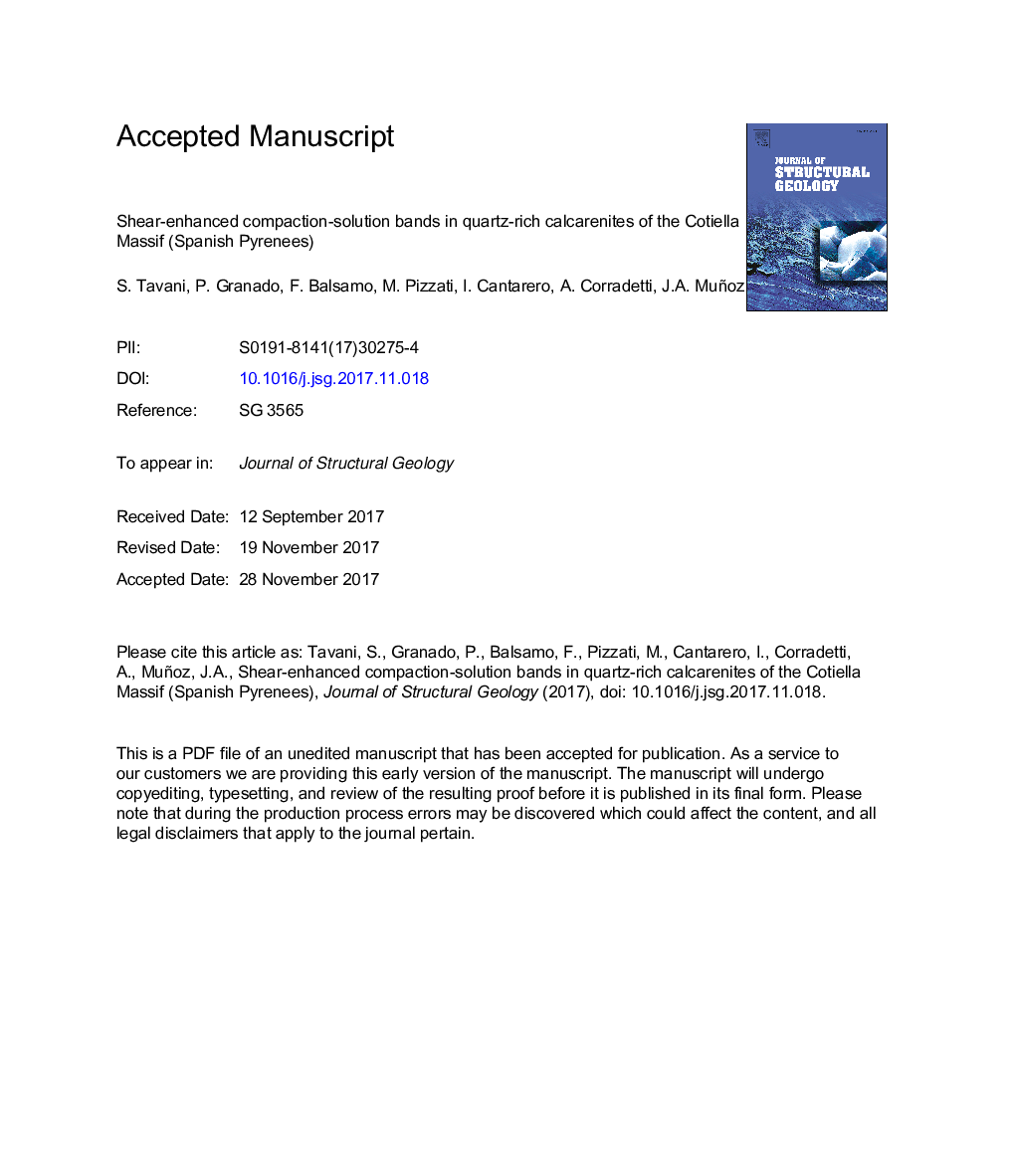| Article ID | Journal | Published Year | Pages | File Type |
|---|---|---|---|---|
| 10120760 | Journal of Structural Geology | 2018 | 24 Pages |
Abstract
We describe conjugate systems of shear-enhanced compaction bands oriented oblique to the maximum compressive stress and developed in Paleocene quartz-rich calcarenites formed by the interplay between shearing, mechanical compaction, and dissolution. These deformation bands are located in the footwall of the Cotiella Thrust (Spanish Pyrenees), and strike perpendicular to the local tectonic transport direction. Conjugate shear-enhanced compaction bands are mutually perpendicular in cross-section, forming an angle of 45° with the shallow-dipping bedding; no macroscopic evidence of shearing is found along them. These shear-enhanced compaction bands occur together with less abundant bedding-perpendicular compaction bands, which strike perpendicular to the local transport direction. The described shear-enhanced compaction bands consist of mm-thick tabular structures showing higher concentrations of quartz grains with reduced sizes in respect to the surrounding undeformed rock. Optical microscope and SEM investigations show that the high concentration of quartz clasts within the bands was caused by pressure-enhanced dissolution of calcite. Quartz grains fragmentation is also observed within the bands, with no significant clasts rotation and translation. All these features indicate that the described shear-enhanced compaction bands are hybrid structures developed during layer-parallel shortening associated with the Cotiella Thrust and are characterized by localized dissolution of calcite grains and fragmentation of quartz grains.
Keywords
Related Topics
Physical Sciences and Engineering
Earth and Planetary Sciences
Geology
Authors
S. Tavani, P. Granado, F. Balsamo, M. Pizzati, I. Cantarero, A. Corradetti, J.A. Muñoz,
